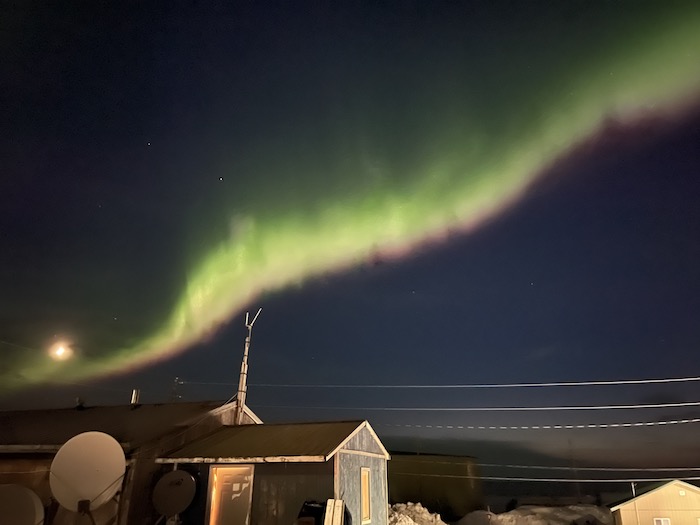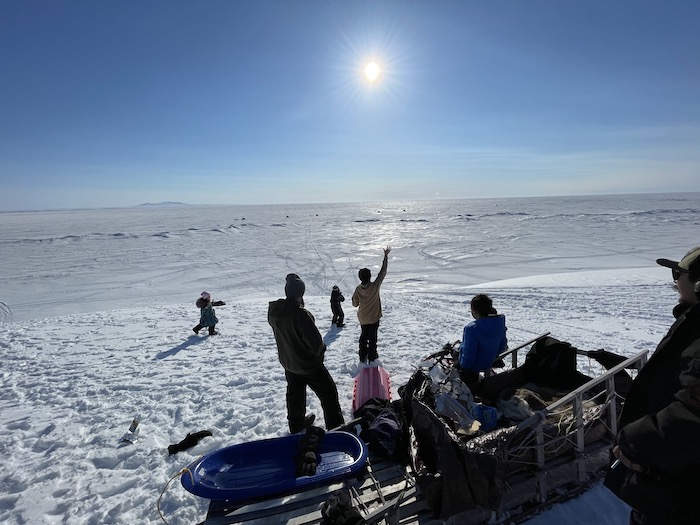By: Kaare Sikuaq Erickson, Principal of Ikaaġun Engagement
What does “proper engagement” between Arctic researchers and Indigenous communities mean in 2021? The context of the situation is extremely important. The COVID-19 pandemic has brought Arctic research, and its heavy reliance on domestic and international travel, to its knees. This is an opportunity for reflection and hopefully a turn towards utilizing more local community resources in the Arctic (Petrov et al. 2020). With all the uncertainties surrounding Arctic research in the past year, it is vital that we remember some obvious, but particularly important, guidelines that many in our field are obligated to follow.
I know, I am preaching to the choir; you have heard this many times already. However, we cannot overstate how important it is for everyone involved in US federally funded Arctic research (e.g., researchers, supporting contractors, funders, all of us!) to stop and look in the mirror and ask ourselves how our research and operations are guided by the following five core values:
- Be Accountable
- Establish Effective Communication
- Respect Indigenous Knowledge and Cultures
- Build and Sustain Relationships
- Pursue Responsible Environmental Stewardship
These core values were written in 2018 by the Interagency Arctic Research Policy Committee (IARPC), an aggregation of the 14 US federal agencies who fund research operations in the Arctic. Barriers such as wide geographical and cultural gaps, the temporality of project funding, uncertainty due to travel restraints, and other logistical issues can make it exceedingly difficult for scientists and supporting contractors in Arctic research to fully demonstrate and convert these values into practice. However, a genuine effort to embody the core values, regardless the situation, is needed. It is crucial for all of us to understand what the funding agencies and local communities in the Arctic are expecting of Arctic research. If you need additional guidance on the principles and core values, the National Science Foundation (NSF) and IARPC provide accessible elaboration.

To further appreciate the context of Arctic research in 2021, we need to also recognize that pandemics have had devastating impacts on most of our families and communities in the Arctic. For instance, nine out of 24 villages in the Bering Straits region lost ½ or more of their populations during the 1918–1919 influenza epidemic (Mamelund et al. 2013). This history, locally referred to as “the Great Death,” (Napolean 1991) set the stage for the way Arctic communities reacted to the COVID-19 pandemic. This context will continue to impact how Arctic researchers and residents engage with each other. We all need to prepare for permanently elevated travel, health, and safety protocols. Proper engagement is no longer an issue of good will, it is an issue of extreme importance and it might be the answer to the future viability of Arctic research.

Within Arctic research, there is also a “capacity building” dilemma that negatively affects engagement between researchers and residents in two main areas. First, due to funding constraints, a majority of Arctic research funding is prohibited from investing in physical infrastructure in Arctic communities. Coincidentally, this infrastructure is exactly what locals need to build the capacity to support and fully engage with Arctic research projects. Quickly building up infrastructure in the Arctic is nothing new. For example, the relatively immediate construction of the former 63 DEW Line sites in the 1950s by the US and Canada required the importation of 918 million pounds of materials to build the infrastructure (Lackenbauer et al. 2005). The second area of concern in reference to capacity building is that increased funding opportunities, in addition to calls for interdisciplinary projects, have resulted in the development of a large cohort of newcomers within Arctic research (both researchers and contractors) who need additional required orientation to help prepare and educate them on how to properly engage with Arctic communities. These types of relevant resources can be extremely hard to find.
So, what does “proper engagement” between Arctic residents and Arctic researchers mean in 2021 and beyond? The answers are many. The polysemous nature of “proper engagement” is due to the extreme natural, geographical, social, and economic variability in the Arctic and in Arctic research. This requires each research project, initiative, program, and endeavor that plans to work in, near, or with local and Indigenous communities to tailor their projects—not just travel plans—to serve the mutual expectations and needs of the funders and the Indigenous communities. One can start by reflecting on how their projects and operations value and demonstrate the guidelines mentioned at the beginning of this text.
Has everyone in Arctic research always followed the IARPC guidelines? No. Will all people in Arctic research follow the guidelines in the future? No. However, in 2021 we all need to be accountable to the Arctic communities we work in and near. We need to establish effective communication. We need to do everything we can to build and sustain relationships with local communities. We need to pursue responsible environmental stewardship. Last and certainly not least, every one of us needs to make an honest effort to respect Indigenous Knowledge and Arctic cultures. All of us in Arctic research should stop and take serious consideration of what “proper engagement” with Indigenous communities means to each of us. The reflection is necessary, and the time is pivotal.
For further information, please go to: Ikaagun.com
References
Lackenbauer, P.W., Farish, M.J. and Arthur-Lackenbauer, J. 2005. The Distant Early Warning (DEW) Line: A Bibliography and Documentary Resource List. The Arctic Institute of North America.
Mamelund, S., Sattenspiel, L., and Dimka, J. 2013. Influenza-Associated Mortality During the 1918–1919 Influenza Pandemic in Alaska and Labrador: A Comparison. Social Science History 37:177-229. 10.1215/01455532-2074420.
Napolean, H. Yuuyaraq: The Way of the Human Being. University of Alaska, Fairbanks, Center for Cross-Cultural Studies, 1991.
Petrov, A.N., Hinzman, L.D., Kullerud, L. et al. 2020. Building Resilient Arctic Science Amid the COVID-19 Pandemic. Nature Communications 11:6278. https://doi.org/10.1038/s41467-020-19923-2
About the Author
 Kaare Ray Sikuaq Erickson is the Principal and team lead for Ikaaġun Engagement, based in Unalakleet and Anchorage, Alaska. Sikuaq was raised on the Bering Sea coast and has family scattered across northern Alaska from Unalakleet to Shishmaref to Utqiaġvik. Sikuaq was taught to provide for his communities through subsistence and leadership; to be aware of problems facing Arctic communities; and to find creative, realistic, and effective ways to alleviate or solve those issues. Sikuaq spent nearly two decades immersed in cultural studies and has most recently spent several years developing and implementing creative, effective, and efficient outreach, engagement and K-12 education programs for high profile Arctic research projects. Sikuaq's unique upbringing and specialized training allows him to successfully fulfill his role as cultural broker connecting Arctic communities and Arctic research entities.
Kaare Ray Sikuaq Erickson is the Principal and team lead for Ikaaġun Engagement, based in Unalakleet and Anchorage, Alaska. Sikuaq was raised on the Bering Sea coast and has family scattered across northern Alaska from Unalakleet to Shishmaref to Utqiaġvik. Sikuaq was taught to provide for his communities through subsistence and leadership; to be aware of problems facing Arctic communities; and to find creative, realistic, and effective ways to alleviate or solve those issues. Sikuaq spent nearly two decades immersed in cultural studies and has most recently spent several years developing and implementing creative, effective, and efficient outreach, engagement and K-12 education programs for high profile Arctic research projects. Sikuaq's unique upbringing and specialized training allows him to successfully fulfill his role as cultural broker connecting Arctic communities and Arctic research entities.
